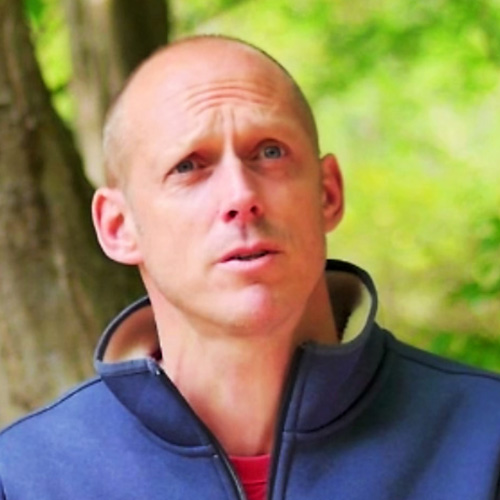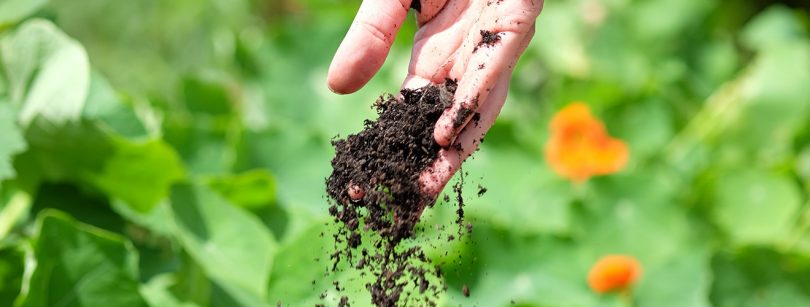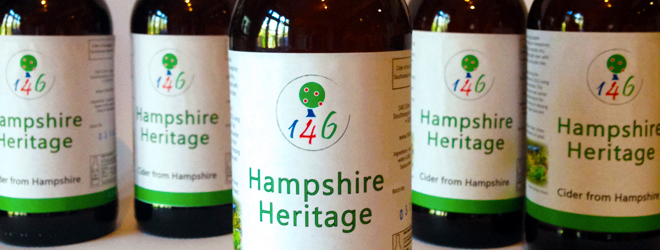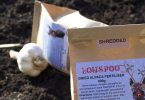Did you know there’s a soil crisis going on? We’re all becoming increasingly aware of the damage human activity is causing to our air and our seas but less publicity is given to the degradation of the soil beneath our feet. As gardeners we like to think we know about the importance of good quality soil and do our best to look after it. But is there more that we, and the rest of the world, can do to improve the situation?
Sacred Earth is an environmental group that connects people with nature and has been looking into the ancient practice of using soil-enhancer ‘biochar’ – an eco-friendly charcoal that can be dug into the soil to improve its fertility. The group has just launched its first biochar product for domestic gardeners so we caught up with Sacred Earth founder Phil Greenwood to find out more about the project.

Sacred Earth founder Phil Greenwood
How did the Sacred Earth project come about and what inspired you to start producing biochar?
I set up Sacred Earth in 2011, because I believe the ecological crisis we’re facing today is down to humanity’s loss of connection with the natural world. I think if we can revitalise that connection, we can create a positive way forward for our children and the environment in the face of climate change.
Sacred Earth has a beautiful 40-acre site near the village of Horam, East Sussex. It’s entirely off-grid. There’s no gas, electricity or even a connection to the water mains. It was once an abandoned brickworks, but under our stewardship, we’re returning it to its natural state, by encouraging biodiversity and helping the local plant, tree, animal and bird life thrive.
Our biochar project is about one of the most fundamental things in our whole ecosystem: the soil. The issue of soil health is something that’s been troubling me for a long time. Thanks to the fantastic work of David Attenborough, the general public now understands what a disaster plastic is for our environment. But too few people are aware that another environmental crisis is happening, right beneath our feet. Research from the United Nations shows that a third of all soil on our planet is ‘severely degraded’. Our own government has admitted we only have 40 years until UK farmlands become infertile. Monoculture farming combined with the use of pesticides and chemical fertilisers has depleted soils of the mycorrhizal fungi and other beneficial micro-organisms essential to plant and crop health. Much garden soil is unhealthy too, because compost hasn’t been added, weed killer has been applied or it simply hasn’t been tended carefully enough.
This is a terrible state of affairs, because all life on Earth is dependent on the thin layer of topsoil that covers our planet. But I don’t want everyone to despair. There is hope – and that’s our message! Adding biochar to soil is just one of the many ways we can turn this situation around. It has amazing benefits, both in terms of soil health and sequestering carbon in the ground.
After I’d set up Sacred Earth, it became obvious that I should start making biochar, as I had all the raw materials readily available. Much of our site is woodland. We manage it with the ancient techniques of pollarding and coppicing (which is basically pruning trees to encourage regrowth). I realised I could make biochar with all the leftover wood offcuts. The next step was to get a kiln and I took it from there.
How is biochar produced?
We make it by hand in small batches. It’s all very rustic! Normal charcoal is made by burning wood at high temperatures, but biochar is baked at lower temperatures, in the absence of oxygen – in a process known as ‘pyrolysis’. When it has cooled, we grind it by hand and blend it with our unique recipe of other soil improvers, including comfrey tea, foraged seaweed and biodynamic compost preparations. It’s very labour intensive, but done with great care.
How would I go about treating my veggie beds with biochar?
Sacred Earth’s Biochar Soil Booster only needs to be dug into soil once. You have two options. You can dig it into the soil directly, or you can mix it with compost first and then dig it in. If you do the former, there is no set square meterage of soil to which to add biochar. Even tiny amounts can bring about results. However, we’d suggest approximately 1 kg per square metre. If you want to add it to established plants, we’d suggest incorporating a good few handfuls around their roots. You’ll need at least 1kg for a small tree. If you decide to add it to compost first, we would recommend one part Biochar Soil Booster to nine parts compost.
You can use it all year round, but a good time to think about improving the structure and general health of your soil is in autumn-winter, when the growing season has finished. Soils rest during this period, making it an excellent time to add amendments designed to rejuvenate it.
What results can I expect from using it?
There is a growing consensus of scientific research showing that biochar enhances soil health and so improves plant health and crop yields. I have certainly found that in my own garden.
You have to be patient though. Sacred Earth’s Biochar Soil Booster is designed to improve soil’s long-term health. One of the key things biochar does is to encourage the revival of microbial systems within the soil. This can take time, depending on the current health and makeup of your soil. You might not see its benefits straight away, but it will greatly improve your soil’s function over time.
But here’s the exciting thing: unlike other soil improvers, biochar does not decompose. It will stay in your soil almost indefinitely, enhancing and improving the natural health and fertility of your soil for decades to come. In the Amazon basin there are still incredibly fertile charcoal-based soils that the indigenous people made thousands of years ago.
Is there a crop that particularly thrives on Biochar?
No particular one that I’m aware of. I put it on everything!
What types of community projects are currently in action at Sacred Earth?
We specialise in experiential learning. We run courses and events designed to help people establish better relationships with themselves, each other and the natural world. They’re on topics like understanding bird song, mindfulness in nature, animal tracking or rural crafts. We also run a unique year-long programme for teenagers, called the ‘Earth Steward Apprenticeship’ – in which 13 to 17-year-olds come monthly to our site and learn how to make fire, forage and wild camp. It ends with a survival quest, in which they have to fend for themselves off the land. We also have regular community days, which we encourage people to come along to, so they can experience our stunning site and meet our friendly community. All events are listed on the website (https://sacredearthland.co.uk/), although we’re now slowing things down, as we move into autumn.
What do you have planned for Sacred Earth in the future?
Oh, we have so many plans! We’re busy organising the creation of a community garden for next year. We’re also going to be expanding our ecotherapy offering, hopefully working with other local community groups and charities. Too many people have lost touch with the natural world and we want them to come to our lovely wilderness and discover its joys. Through our biochar project, we want to get the word out about the global soil health crisis. We plan to start talking to fruit and veg growers and farmers about its benefits. We’re also in talks with a university about doing some biochar research on our land, although I’m not able to reveal any details on that just yet.
There’s just so much to do when it comes to the environment, but I remain optimistic. I’m hopeful that lots of small, community-owned eco organisations like ours will pave the way for a new way of doing things.

A piece of eco-friendly charcoal ‘biochar’
Sacred Earth Biochar Soil Booster is available from sacredearthland.co.uk








[…] concerns so we’re always keen to promote new trends that help to improve matters. A few years ago we promoted biochar as a soil improver, a substance that is effective at retaining nutrients and water. And, according […]